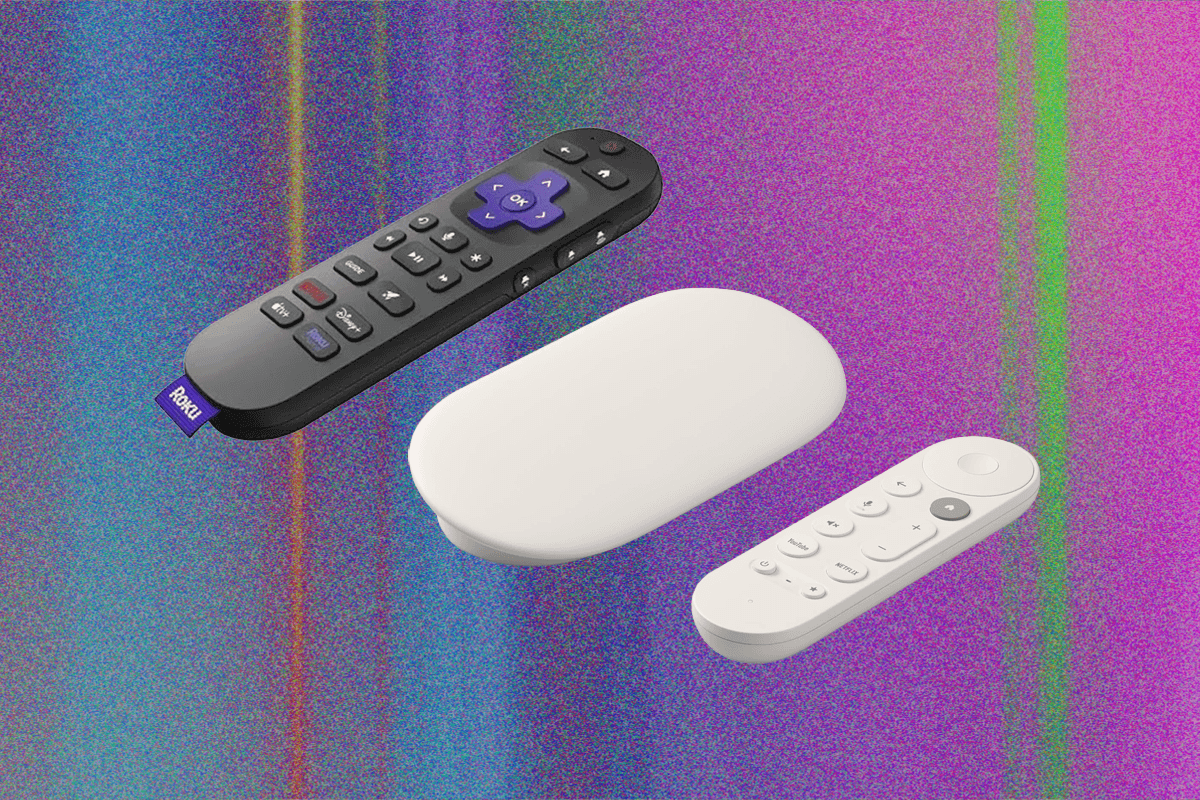You probably stream most, if not all, of your content. The best streaming device makes that process easier. If you’ve purchased a new TV recently, it likely has a built-in streaming interface. Some of these are fine, but a stand-alone streaming device can offer a better experience. We’ve tried them all—from Roku, Apple, Google, Amazon, and even a cheap Walmart-owned brand—so you don’t have to, and we’ve separated each of our favorites by what they do best.
To test streaming devices, I note how easy or complicated the setup was, from the first plug-in to signing into all our favorite streaming services, and then I watch TV! I stream a lot of content in general even when I’m not testing a new device, but for at least a week, I watch a few hours of movies, TV shows, and YouTube videos every day, installing and deleting apps, and playing around with any additional features within the device itself or on the remote.
Check out all our home theater guides, like the Best Roku Devices, Best Streaming Services, Best TVs, Best Soundbars, Best TV Antennas, and Best Projectors.
Updated June 2025: We’ve added the new Roku Streaming Stick 4K.
Why You Need a Streaming Device
If you just bought a smart TV, you may be wondering: Why pay extra for a streaming device? TV makers are far better at manufacturing beautiful screens than they are at building good software. So unless that TV was a Roku TV or a Google TV, you should consider an external streaming device. Chances are high that your TV’s house-made apps are slow, poorly designed, and out of date—and that’s if it has the apps you want.
The streaming apps for Roku, Google TV, Amazon Fire TV, and Apple TV are typically the best you’ll find, and if they’re broken they get fixed very quickly. LG, Samsung, and any number of other TVs come with their own interfaces, but I suggest you ignore them.
Which TV OS Should You Choose?
Roku is our favorite streaming OS because it has just about every streaming app there is, and the setup is hassle-free. You don’t have to be technologically savvy to figure it out. Roku also isn’t made by one of the major tech companies. Even though it has moved to include home security in its lineup, the company survives on how well its streaming device platform performs.
Chromecast used to eschew an interface altogether, but more recent versions have Google TV built in. Though casting is no longer its main draw, these devices are excellent at letting you send web pages or other content directly from your smartphone (it’s easiest on an Android phone), which is quite handy. You can also do this with Apple TV’s AirPlay 2 functionality, but you need an iOS or macOS device. Chromecasts are officially being discontinued though you’ll still see some around at various retailers. Going forward, Google will be focusing its efforts on Google TV and products like the Google TV Streamer.
Google TV, formerly called Android TV, is Google’s current streaming OS. It’s been around for years, but it nailed the experience in 2020. With its newest Google TV Streamer 4K, we stopped seeing the bugs and problems that used to plague the platform, and it includes basically every streaming app out there, as well as YouTube and Spotify. You can still cast just as easily as like on the original Chromecast dongles.
Amazon Fire TV is geared toward those who really enjoy Amazon’s ecosystem, and it will quickly point you to its content. It also has a great voice interface. Unfortunately, it sometimes feels like an ad for Amazon stuff more than a diverse ecosystem of apps and content. If you buy or rent a lot of movies from Amazon and subscribe to Prime, the Fire TV is appealing. If not, go with a Roku.
Apple TV has a slick interface and Apple’s usual gloss. The company wasn’t updating its models or its interface all that often, but we’ve seen improvements over the last few years. If you have a house full of Apple stuff and enjoy AirPlay, you may as well complete your collection.
Best Streaming Device for Most
Roku has several great devices available, but the Streaming Stick 4k, and now its new cheaper 4K Streaming Stick Plus model, has basically always been our top pick. Updated for 2025, it now streams up to two times faster than before, thanks to upgraded Wi-Fi and processing. It’s affordable, small, fast, and comes with a long-range wireless receiver. It plugs right into your TV’s HDMI port, so you won’t see it dangling, and you just plug the USB-C cable into an outlet on your TV or wall. This model comes with a voice remote, so you can hold the microphone button to ask it to play specific shows.
Roku’s interface isn’t the most polished of our picks, but it’s the easiest to navigate, whether you’re tech-savvy or not. It’s not cluttered or overwhelming, with a simple home screen where all your favorite apps live. Voice search makes it easy to find whatever you’re looking for across platforms, and the apps remain stable when TV-based ones can stutter. This model doesn’t feature Dolby Vision, but it does support HDR10, which should be more than good enough for most streaming needs. If you are a true cinephile, consider upgrading to a more expensive model.
Best for Casting (and Anyone on Google Home)
Google’s latest high-end streaming device is, no surprise, our favorite ever. Gone are the days of stuttering screens and apps that sometimes crashed on prior Chromecast models. Here to stay is Dolby Vision support, Thread router features that let it work as a smart home hub, and some of the best voice search I’ve used on a streaming device, apart from Roku.
The Streamer officially replaces the Chromecast With Google TV, but it still has the same casting functionality that made Google’s original dongle a huge hit. As long as you’re on the same Wi-Fi network, you can cast media from your phone, tablet, or laptop, directly to your TV—that includes casting your screen or even photos from a recent trip to show your family. The interface supports virtually every app you could ever want to stream from, but I particularly like casting the F1 app from my phone because it lets me pick a specific part of the race.
This device isn’t designed like a dongle like prior Chromecasts but is more like a set-top box. Place it on your media console, connect it to a power source, and connect an HDMI cable to your TV (the HDMI cable is not included). There’s a button on the back to ping the location of the remote if you can’t find it. Speaking of, the remote is longer and has a shortcut to access your “Favorited” smart home devices via a Google Home overlay, so you can quickly see who’s at the front door or toggle on the lights without hunting for the phone. It’s a shame this device doesn’t support the newer Wi-Fi 6 or 7 standards, but this hasn’t given us any streaming issues.



-(white)-Top-Remote-Device-Reviewer-Photo-(no-border)-SOURCE-Parker-Hall.jpg)


